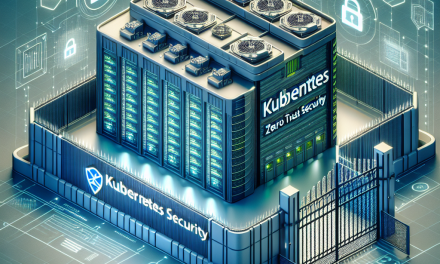In the fast-paced world of cloud computing, Kubernetes remains a cornerstone technology, helping organizations manage containerized applications at scale. One of the intriguing features that has emerged in Kubernetes is ephemeral containers. This article explores what ephemeral containers are, their use cases, benefits, and considerations for Kubernetes users.
What are Ephemeral Containers?
Ephemeral containers are a special type of container in Kubernetes that are designed to run temporarily for the purposes of debugging or troubleshooting. Unlike regular containers that are defined in a pod’s specification and are intended to live as long as the pod, ephemeral containers can be added to an existing pod without needing to modify its original specification.
Key Features
- Temporary Nature: Ephemeral containers are inherently short-lived; they exist only for the duration of the task they are designed for.
- Non-Disruptive: They can be added to running pods without impacting the existing containers, allowing for non-intrusive debugging and diagnostics.
- Limited Access: They can interact with the pod’s network and storage, providing engineers with the tools they need to investigate issues directly within the context of the running application.
Use Cases for Ephemeral Containers
Ephemeral containers serve a variety of purposes in the Kubernetes ecosystem. Here are some common scenarios:
-
Debugging Applications: When an application deployed on Kubernetes is behaving unexpectedly, engineers can use ephemeral containers to launch diagnostic tools and gather logs from the running environment without needing to redeploy or restart the application.
-
Testing Configurations: Developers can use ephemeral containers to test changes in configurations, such as environment variables or volume mounts, directly inside running pods.
-
Performance Troubleshooting: Ephemeral containers can facilitate performance diagnostics by enabling the use of profiling tools that help identify bottlenecks without disrupting ongoing operations.
- Quick Recovery: If a critical service fails, ephemeral containers can be deployed to quickly assess the state of the application and work towards recovery or rollback scenarios.
Benefits of Using Ephemeral Containers
-
Reduced Downtime: By allowing engineers to probe and debug without taking down services, ephemeral containers significantly reduce downtime and improve overall system reliability.
-
Enhanced Security: The temporary nature of ephemeral containers ensures that debugging tools and processes do not linger in the environment after they serve their purpose, reducing potential attack vectors.
-
Streamlined Development: Developers can iterate more quickly when they can debug applications on-the-fly, streamlining the development process and improving the software delivery lifecycle.
- Better Observability: Easily attach monitoring tools to running applications to gain deeper insights into performance and behavior without needing a full redeployment.
How to Use Ephemeral Containers in Kubernetes
Using ephemeral containers is straightforward. As of Kubernetes 1.23, the functionality is part of the standard Kubernetes API. Here’s a quick guide on how to implement them:
-
Identify the Pod: First, identify the pod you want to add an ephemeral container to.
-
Create the Ephemeral Container: Use the following command to add an ephemeral container. Replace
<namespace>,<pod-name>, and<container-image>with the appropriate values.bash
kubectl debug -npod/ –image= –ephemeral -
Run Diagnostics: Once the ephemeral container is running, you can execute commands or run tools as needed to debug or investigate the running application.
- Exit the Ephemeral Container: After you have gathered the necessary information, you can terminate the ephemeral container.
Considerations
While ephemeral containers provide significant benefits, there are factors to keep in mind:
- Resource Management: Since ephemeral containers consume computing resources, it’s essential to monitor the resource utilization to prevent overloads.
- Security: Be cautious about the images used for ephemeral containers; ensure they are trusted and do not expose vulnerabilities.
- Limited Persistence: Since these containers are ephemeral, any changes made during their runtime will be lost unless explicitly saved in persistent storage.
Conclusion
Kubernetes ephemeral containers are a powerful feature that enhances the ability to debug and maintain applications without significant disruption. By allowing developers and operators to interact with running applications, ephemeral containers provide a streamlined way to diagnose issues, test configurations, and improve observability in Kubernetes environments. As you continue to navigate the complexities of container orchestration, understanding and leveraging ephemeral containers can lead to more robust and resilient systems.
For more insights on Kubernetes and cloud technologies, stay tuned to WafaTech Blogs!





